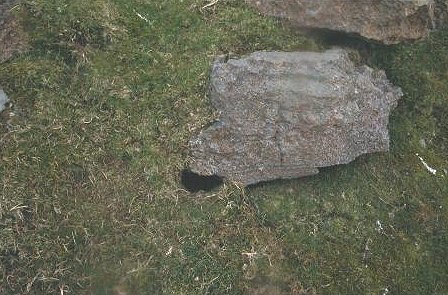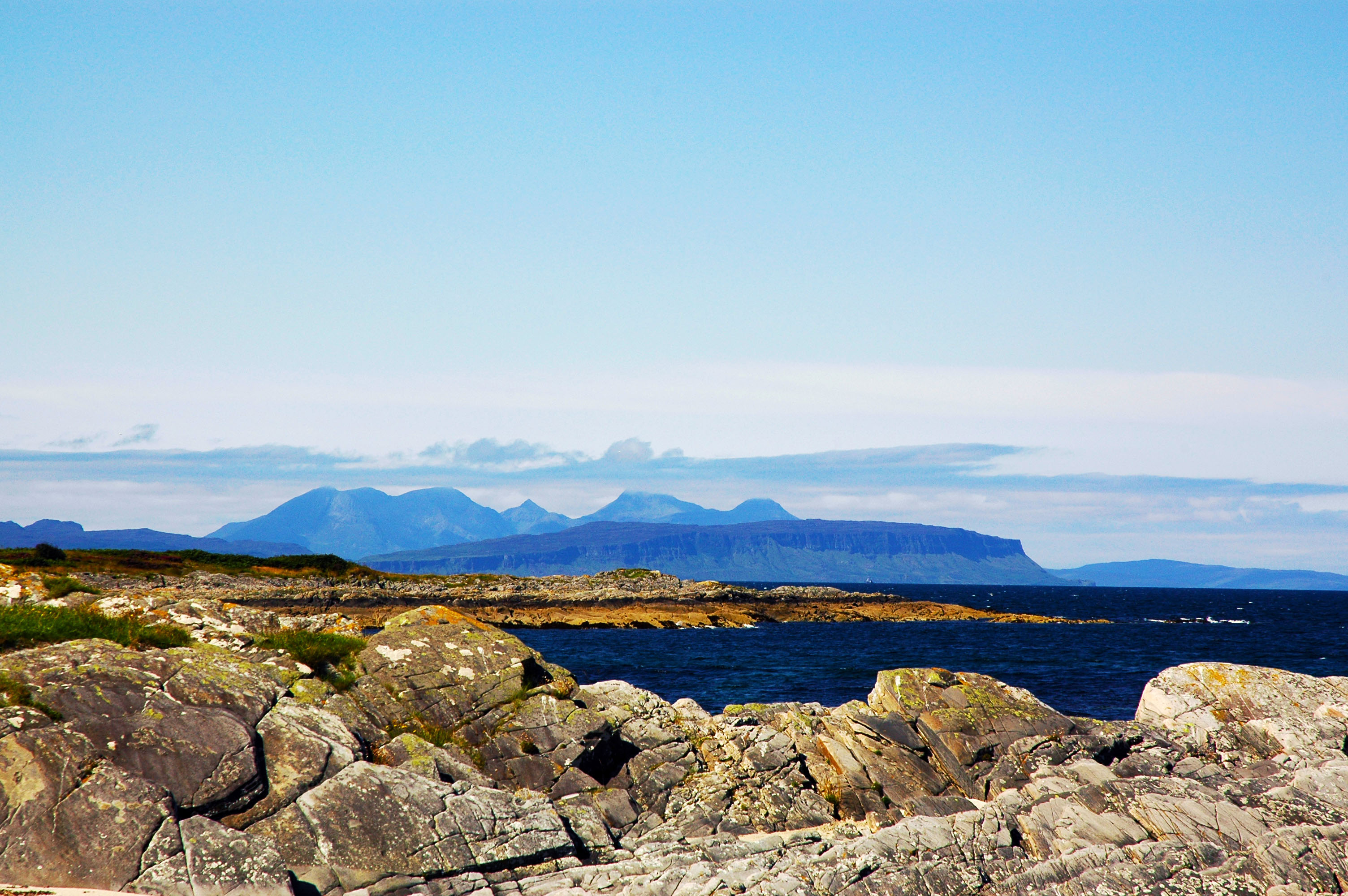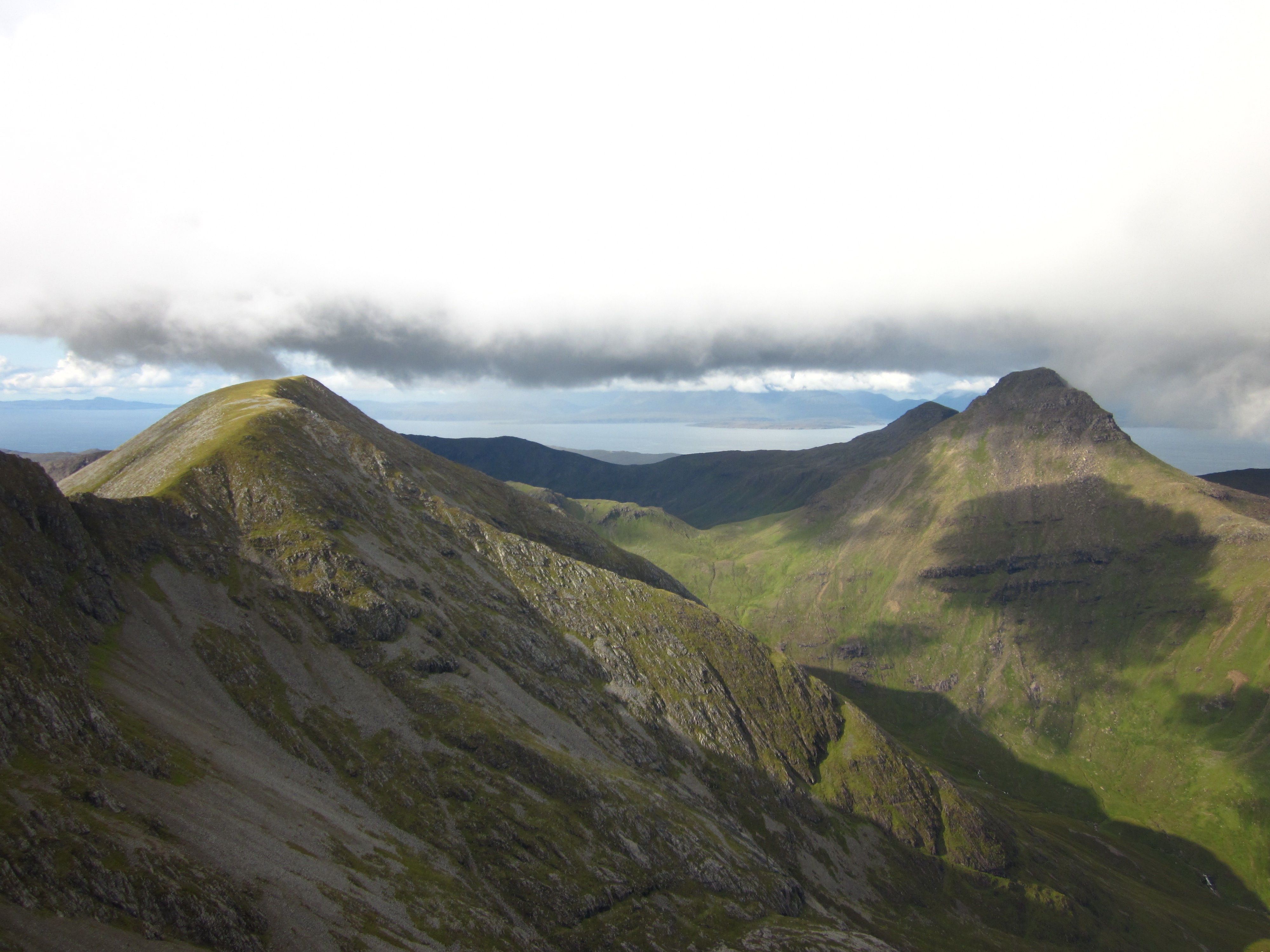The Small Isles
Island Group in Inverness-shire / Argyllshire
Scotland
The Small Isles

The Small Isles is a group of islands located off the west coast of Scotland, in the council areas of Inverness-shire and Argyllshire. The islands that make up this group include Canna, Eigg, Muck, and Rum. These islands are known for their stunning natural beauty, rugged landscapes, and rich biodiversity.
Canna is the westernmost island in the Small Isles and is home to a small population of residents as well as a diverse range of wildlife. Eigg is known for its community-owned renewable energy system and pristine beaches, making it a popular destination for eco-tourism. Muck is the smallest of the Small Isles and is known for its picturesque scenery and laid-back atmosphere. Rum is the largest island in the group and is home to a national nature reserve, which is a haven for rare wildlife and bird species.
Visitors to the Small Isles can enjoy hiking, birdwatching, and exploring the unique cultural heritage of these remote and beautiful islands. Ferries operate between the islands and the mainland, making it relatively easy to visit this hidden gem of the Scottish Highlands.
If you have any feedback on the listing, please let us know in the comments section below.
The Small Isles Images
Images are sourced within 2km of 56.951875/-6.2739249 or Grid Reference NM4092. Thanks to Geograph Open Source API. All images are credited.

The Small Isles is located at Grid Ref: NM4092 (Lat: 56.951875, Lng: -6.2739249)
Unitary Authority: Highland
Police Authority: Highlands and Islands
What 3 Words
///protects.fuses.reference. Near Elgol, Highland
Nearby Locations
Related Wikis
Small Isles
The Small Isles (Scottish Gaelic: Na h-Eileanan Tarsainn) are a small archipelago of islands in the Inner Hebrides, off the west coast of Scotland. They...
Askival
Askival is the highest mountain on the island of Rùm, in the Inner Hebrides of Scotland. It is located 5 kilometres (3.1 mi) south of Kinloch, the main...
Ainshval
Ainshval is the second highest mountain on the island of Rùm, in the Inner Hebrides of Scotland, after Askival. It is part of the Rùm Cuillin, a range...
Trollabhal
Trollabhal (also known as Trallval) (702 m) is a mountain in the island of Rùm in Lochaber, Scotland. Although the lowest of the 'Rum Cuillin' in the south...
Have you been to The Small Isles?
Leave your review of The Small Isles below (or comments, questions and feedback).



















